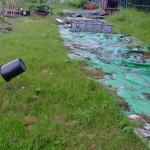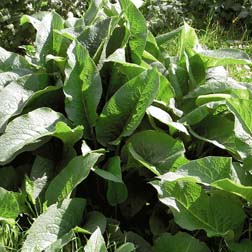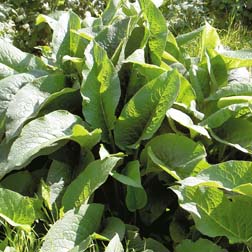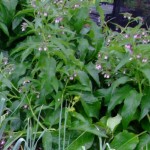Christmas presents for gardeners
Thursday, October 4th, 2012When you’ve got a gardener in your life there’s always something you can buy them for their birthday or Christmas. Whether it’s a few packs of seeds or something more shiny like these spades.
A new spade needs to be the right height and handle type. So discuss with them the merits of spade handles but make sure you don’t get mixed up and discuss fork handles else you might have a very different conversation.
A brand new shiny spade would make a great gift. Just put a bow on it and present it on the special day!

Dobbies Select Stainless Steel Border Spade £18.00
The Select range of tools offers exceptional quality and traditional style. Inspired by over 140 years of horticultural expertise and crafted from the finest Ash and stainless steel, they are sure to bring you a lifetime of gardening pleasure.. Head Material: Stainless steel. Head Size: Length: 450mm-470mm, Max Width: 140mm. Shaft Material: Ash Wood. Shaft Size: Length: 445mm-485mm.

Dobbies Select Stainless Steel Digging Spade £18.00
The Select range of tools offers exceptional quality and traditional style. Inspired by over 140 years of horticultural expertise and crafted from the finest Ash and stainless steel, they are sure to bring you a lifetime of gardening pleasure.. Head Material: Stainless steel. Head Size: Length: 570mm-595mm, Max Width: 180mm. Shaft Material: Ash Wood. Shaft Size: Length: 460mm-480mm.

Dobbies Essentials Stainless Steel Border Spade £15.00
Head Material: Stainless steel. Head Size: Length: 430mm-470mm, Max Width: 140mm. Shaft Material: Fiberglass with PP. Shaft Size: Length: 430mm-470mm. Our classic range of quality gardening essentials has everything you need to make the most of your garden. Dobbies, gardeners since 1865.

Dobbies Essentials Stainless Steel Digging Spade £15.00
Our classic range of quality gardening essentials has everything you need to make the most of your garden.. Head Material: Stainless steel. Head Size: Length: 570mm-595mm, Max Width: 180mm. Shaft Material: Oak Wood. Shaft Size: Length: 460mm-480mm. Our classic range of quality gardening essentials has everything you need to make the most of your garden. Dobbies, gardeners since 1865.

Yeoman Ladies Light Choice Border Spade £14.99
Yeoman Light Choice. At last – a range of Premium garden tools designed exclusively for female gardeners. Yeoman Light Choice tools are up to 20% lighter than standard Yeoman tools, and their ergonomic designs have been developed for maximum comfort and ease of use. – Carbon steel border spade – Up to 20% lighter than standard Yeoman range – Lightweight yet strong fibreglass shaft – Ergonomic, soft grip handle – Ideal for digging in beds and borders










 To dig or not to dig
To dig or not to dig


